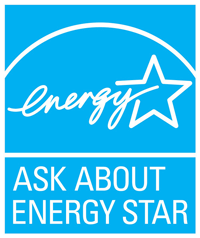
If you’re needing air conditioner installation in Auburn, you should also be considering your new air conditioner’s SEER rating.
SEER stands for Seasonal Energy Efficiency Rating. Basically, it measures how effective your air conditioner is at converting electricity into cooled air. A high number signifies your air conditioner is more efficient, which is excellent for your electric costs.
However, there are a lot of varying options to choose from for air conditioners. And a higher SEER rating typically includes a bigger cost. So, how can you determine which one is best for your home?
At Forster Heating, we give you a free, no-pressure home comfort analysis. You can get one by contacting us at 530-885-8081. Our knowledgeable air conditioner installers will work with you to help you locate the right air conditioner for your home. Plus, they’ll also give you a free, no-obligation estimate.
In the meantime, let’s go over SEER ratings and how they can impact your family’s comfort. And your energy expenses.
Does SEER Rating Really Matter?
In 2016, the federal government created new SEER criteria. New air conditioners must be at baseline 13 SEER in the northernmost United States and 14 SEER in the southeast and southwest. If you don’t know when you had your air conditioner installed or what its SEER number is, you can check the sticker on the unit outside your home. If you can’t find the sticker, you can get in touch with us at 530-885-8081 for help.
If your air conditioner was put in in advance of that time, it’s presumably much less efficient. Air conditioning technology has quickly changed in the past several years, with huge breakthroughs in energy efficiency and smart home capacity. Pairing your new air conditioner with a smart thermostat could help you save even more on AC costs, since the thermostat can automatically regulate your temperature settings when you’re gone.
If your present air conditioner has a SEER rating between 8 and 10, adding a 14-SEER system could save you an estimated 30–50% on annual utility bills. Your savings relate to your air conditioner size and your thermostat settings.
Is the Higher the SEER the Better?
An air conditioner with a better SEER rating will be more efficient at converting electricity for cooling. The best efficient ones, which can go as big as 26 SEER, have ENERGY STAR® designation. This designation signifies the air conditioner meets EPA guidelines for energy savings and environmental conservation.
While ENERGY STAR air conditioners are often more costly, you’ll generally get the difference repaid over the years through lower utility costs. These air conditioners, which are usually rated 16 SEER and greater, need about 8% less electricity than other new systems, according to ENERGY STAR.
One of the largest differences between a 14 SEER and 16 SEER is variable-speed capability. A variable-speed air conditioner can operate at a number of speeds. This fine-tunes comfort for your home while keeping your electric costs low. It can also keep temperatures and humidity more even, since it can run for longer without requiring a lot more electricity.
When getting a variable-speed air conditioner, you’ll have to ensure that your furnace or air handler is compatible. This is due to the fact your air conditioner relies on this equipment’s blower to disperse cool air around your house. Furnaces only run for about 20 years, so if yours is getting old, we advise getting furnace installation at the same time so you can get all the perks of your variable-speed air conditioner.
When you’re ready to replace your air conditioner, the cooling professionals at Forster Heating are here to help. Give us a call at 530-885-8081 to schedule your free home comfort analysis right away.



